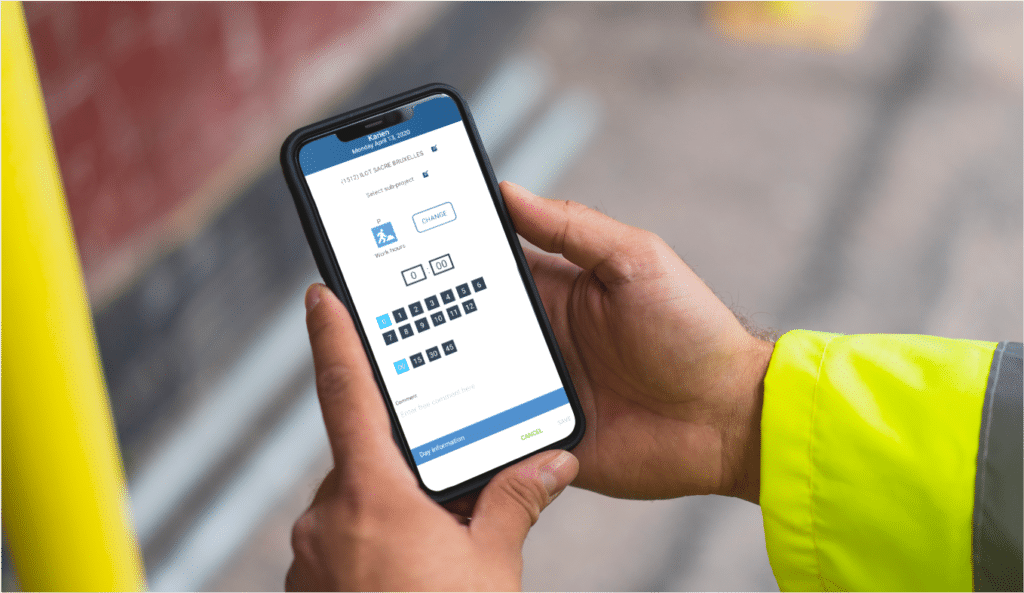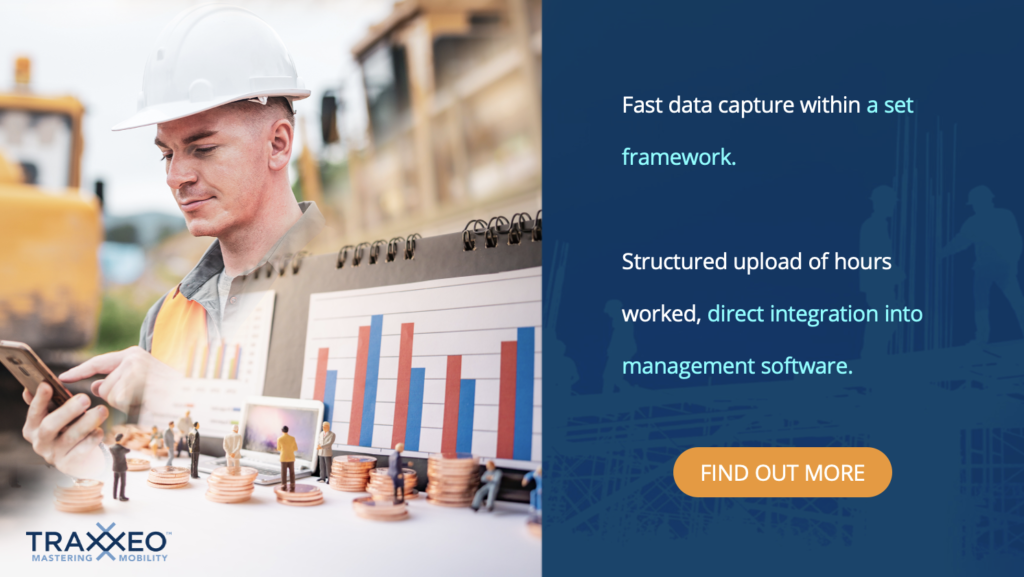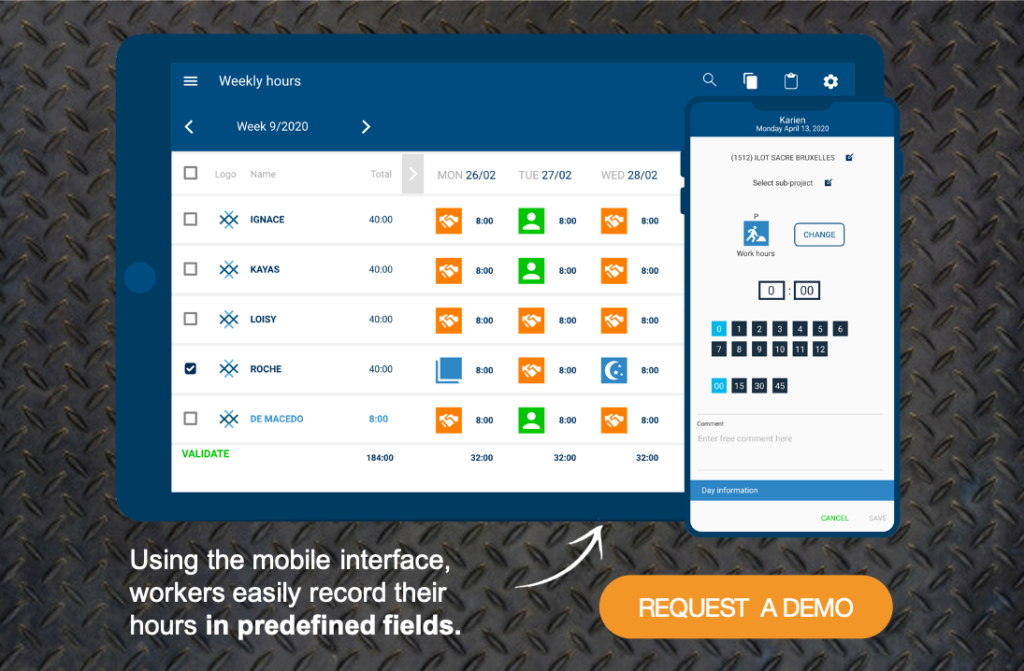
When you decide to invest in time and attendance tracking software for a company in the construction sector, there are many factors to consider. Does the solution meet your needs? Is it suitable for use in the field? For effective time and attendance tracking, it is important to choose a solution that is both suitable for use in the field and integrated with your management software.
Time and attendance tracking in the construction sector: the need for structure
The construction sector and related services require a mobile workforce that works on a variety of sites. This workforce is also diverse: using interims or subcontractors is widespread.
In addition, during construction of a building, for example, workers will have to record the hours worked on different phases, jobs, activities, etc. All this whilst accounting for overtime, night work, weekend work… as well as unforeseen absences. Ensuring effective time tracking can become a real issue.
The challenge is to capture the activities in a structured manner. To do this, it is essential to be able to access, whilst in the field, the complete framework and information that is already in the management software. This includes, for example:
- Project cost structures (site codes, breakdown of phases, activities, etc.).
- Contract information for employees, interims, etc.
- Management rules applicable to different worker profiles
- The different work patterns in place
- Etc.
Recording the data can be done in a predetermined format where it is possible to select, for example, the corresponding site and hour codes from a drop-down list. The data captured in the field is thus uploaded in a detailed and structured way, according to the needs of each department.
Tracking time with an integrated software: 3 examples of added value
What does “an integrated digital solution” refer to? It means that the solution, time tracking software in this case, will be able to communicate with the different software that is already in use (ERP, HRIS, payroll software, etc.). This is possible through an upstream integration undertaken by the software company.
Recording the hours worked by employees with an integrated digital solution generates a number of advantages. See below for three benefits that add a high level of value.

1. Accurate monitoring of performance and time budgets
Integration of the cost structure, from an ERP to the tracking software, leads to highly accurate data capture. Obtaining an overview of the hours spent per project, phase, job, etc. enables optimal progress tracking of the time budget.
Availability of information in real time enables timely identification of any overrun in the time budget allocated for a particular site, job, activity, etc. Financial and performance monitoring are more accurate, which leads to improved reactivity.
2. Correct information for payroll and HR management
There is a vast amount of data contained in HR software, and its integration into a tracking solution enables data to be recorded quickly within a set framework. Contract information for employees (and interims, subcontractors, etc.), management rules, work patterns, hour codes, validation rules… all the necessary information is integrated, which provides easy and intuitive time tracking.
Payroll managers have access to accurate data that is up to date and in the required format. The end of the month pressure is significantly reduced, whilst employees are guaranteed to receive the correct pay.
3. Capturing hours per BIM model object
For BIM (Business Information Modeling) managers, structured recording of the hours worked through an integrated solution enables them to understand the progress of the hours consumed per BIM object.
With the acceleration in the development of digital innovations in the construction sector, it has become vital that all of these solutions can communicate with each other in order to construct a digital ecosystem of all the available information.
How does digital time tracking software work?
In order to be able to adapt to all types of field environments, an optimal digital solution provides various means of data capture:
- A mobile application, on smartphone and tablet, for recording the hours submitted in an intuitive interface;
- Attendance tracking on smartphone, by using RFID tags and QR codes;
- Attendance tracking system on machines using geolocation.
Furthermore, the time tracking software has to be able to adapt to a wide range of processes through a high level of configurability:
- A variety of tracking interfaces (per person/team, day/week, object/project, etc.) suited to mobile use;
- Customisable validation processes;
- High level of personalisation through numerous settings (entities, groups, positions, hour codes, parameters, accessible and structured lists of activities, cost structures, BIM objects, etc.).
A time and attendance tracking software solution for the construction sector must be integrated, intuitive and highly customisable all at the same time.
Traxxeo is a software company specialising in human and material resource management for companies in the construction sector and related services. Are you looking for a specialised digital solution? Let’s see how we can work together to make your project a success.
